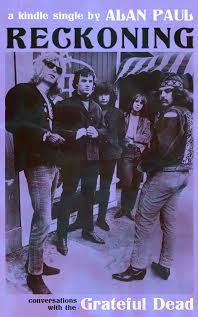Alan Paul's Blog, page 27
July 5, 2015
Chicago Night 2 Review – 4th of July Fireworks
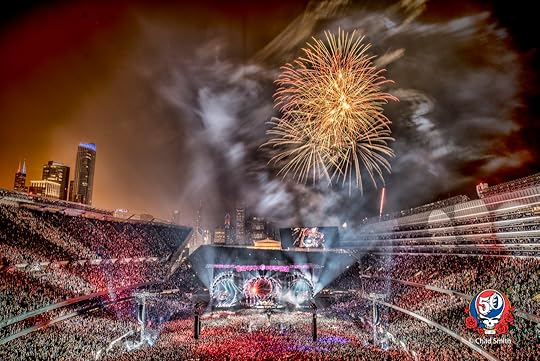
Photo – Chad Smith
Wow. Now this was more like it. Night 2 of 3 in Chicago for the Dead’s Fare Thee Well, said-to-be-final shows at Soldier Field was hard-hitting, consistently satisfying, only a tiny bit meandering and to my ears a full-on triumph. Most crucially: they sounded like a band, not a group of guys jamming it out.
The previous night had seen them push and pull each other, occasionally bumping into clunky grooves, songs that didn’t quite soar and what felt like a fair amount of tension on stage, as songs lingered for lack of someone stepping up to take charge. Even then, it was a mostly successful show, with several triumphant sections, most notably the last hour.
On Saturday, they started out with a slinky “Shakedown Street,” laying down the template for a cohesive show where everyone was in sync. Even at a slower temp, “Shakedown” go the crowd jumping and its repetitive rhythmic structure gave the band a chance to find their sounds, as almost everyone stepped forward for solos and locked into their spots. For the rest of the night, all seven members seemed to be in excellent sync, hearing one another, engaging in musical conversations and taking turns steering the ship.
The ending drifted a bit, but those would be the final moments of indecision in a first set that quickly took shape as an ode to Americana – my own favorite side of the band. They made their first overt ode to the day’s import on the second song, “Liberty,” the Garcia/Hunter composition the Dead never recorded but which Phil Lesh resurrected on There And Back Again.
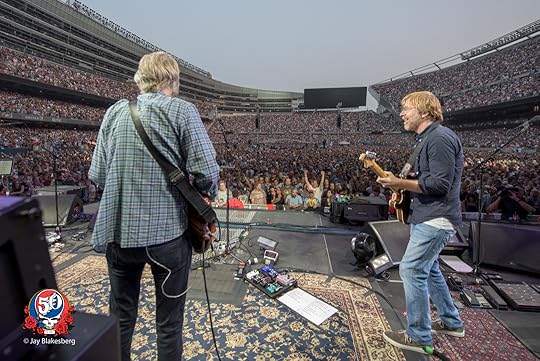
Photo – Jay Blakesberg
After a gorgeous Bruce Hornsby intro, Trey Anastasio staked his claim to the sweet ballad “Standing on the Moon” and then the rest of the first set was a rollicking ode to America and the colorful characters who populate the Dead’s mystical, mythical nation. They played at last a half hour longer than the previous night’s first set; clearly, everyone was feeling it. For most of the set, the tempo remained brisk and on point. A side trip into the classic Chicago blues “Little Red Rooster” felt wholly appropriate and made good use of the two keyboards, with Jeff Chimenti’s organ surging, while Bruce Hornsby’s piano sparkled. Trey quoted Billy Gibbons in his solo, while Bob’s slide solo did not make anyone forget Derek Trucks or Warren Haynes.
“Friend of the Devil “ was played at a nice gallop, enlivened by Trey’s sweet pedal steel licks., and the set closed with a rollicking “Deal.” The strength of the whole thing may be as simple as what one guy on the floor said to me, “Dude, it’s the Fourth of July.”
Set 1: “Shakedown Street,” “Liberty,” “Standing on the Moon,” “Me and My Uncle,” “Tennessee Jed,” “Cumberland Blues,” “Little Red Rooster,” “Friend of the Devil,” “Deal.”
If you’ve read this far, you better have at least checked out my new Ebook, Reckoning: Conversations With the Grateful Dead

Photo – Jay Blakesberg
It was clear from the first spacey notes that slowly coalesced into “Bird Song” that the second set would be a different, less linear affair than the first, but even as the band took a less direct path, they never lost their way. The jam section veered into free jazz, with Trey playing staccato notes into a skronking squall reminiscent of Jean Paul Bourelly and Sonny Sharrock. It would have been nice to hear Hornsby sing this instead of Phil – but Lesh’s bass playing was absolutely fabulous here, guiding the music through space age funk and right into the rolling good time of “The Golden Road.”
“Lost Sailor” and “Saint of Circumstance” have never been among my favorites, but the band rolled through very strong versions, with cohesive jams in and out of the sing-along sections and right into an almost menacing “West LA Fadeaway,” with Hornsby on sterling, polished lead vocals and Phil’s bass again steering the tune. “Foolish Heart” sparkled, and gave Trey a song to really make his own , both vocally and guitar-wise. It was one song that this band clearly played better than the Grateful Dead did and it revealed that the song’s underlying structure was always stronger than we, or at least I, realized.
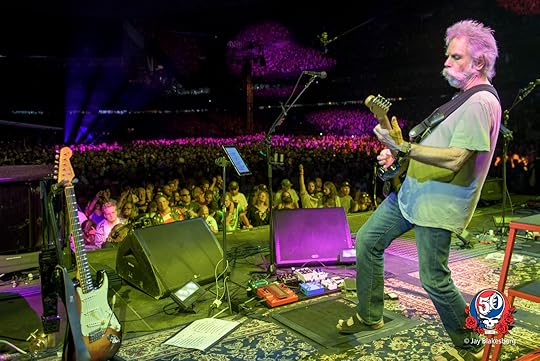
Photo- Jay Blakesberg
Drums was compelling through the tremendous sound system and shown on the gigantic, super high res NFL scoreboard and Space got pretty um spacy before coalescing into “Stella Blue,” played achingly and sung raggedly by Weir. I missed Warren Haynes a bit here; he sings the hell out of this song. The band recharged into the Chuck Berry styled rocker “One More Saturday Night” that we all knew was coming and walked off stage to a thunderous roar.
At the end of his donor rap, Phil offered what felt like a very heartfelt thank you to the crowd and then they ripped through the inevitable 4th of July closer, U.S. Blues.” As the band walked off stage, the 4th of July overture blasted through the sound system and fireworks started. It was an impressive display that looked great from both inside and outside the stadium as I rushed away from a logjam from an absolutely massive crowd. Friday night set a Soldier Field attendance record and the floor was way more crowded. I didn’t want to be caught in the hour-long clusterfuck of leaving. Nothing was going to harsh my groove at the end of a glorious night of music.
Set 2: “Bird Song,” “The Golden Road (to Unlimited Devotion),” “Lost Sailor,” “Saint of Circumstance,” “West L.A. Fadeaway,” “Foolish Heart,” “Drums/Space,” “Stella Blue,” “One More Saturday Night” ENCORE: “U.S. Blues”
July 4, 2015
Grateful Dead Chicago Night One “Bertha” Video – Billboard Review

Copyright Jay Blakesberg
Last night’s Fare Thee Well Grateful Dead show in Chicago broke the record for attendance at Soldier Field set by U2’s 360 Tour in 2009 (last night: 70,764, U2: 67,936). Unfortunately, the crowd control entering and exiting the stadium was terrible. As if the city had done no preparation for this onslaught. Hopefully thats straightened out tonight. Everything else was pretty swell.
My Review for Billboard is here.
And here’s a taste of “Bertha” – official video:
July 3, 2015
Fare Thee Well – Grateful Dead Night One Chicago Opening Video
Reckoning: Conversations With the Grateful Dead
I’m very proud about my new Ebook, Reckoning: Conversations With the Grateful Dead and hope that you will check it out.
The book includes interviews with Bob Weir, Phil Lesh, Phil and Trey Anastasio together,Robert Hunter, Bill Kreutzmann, Warren Haynes, Dick Latvala, John Kadlecik, Steve Kimock and Mark Karan and many more.
It also includes wonderful photos by Kirk West and Bob Minkin – and it costs $2.99!
Great Dead scholars like Dennis McNally, David Browne and Peter Richardson dig the book – and you will, too.
“I suspect that it is his intimate association with another band, the Allman Brothers, that has given Alan Paul his knowledgeable but balanced view of the Grateful Dead. He’s been one of the leading G.D. observers for years, as this collection proves – connected but not caught up in the mythology. Anyone who wants to know the post-Garcia Dead should read this book.”
-Dennis McNally, Grateful Dead publicist and historian, Author of A Long Strange Trip: The Inside History of the Grateful Dead
“From how songs were written to how disagreements were settled, Alan Paul asks the type of questions every Deadhead wishes he or she could ask of their favorite band. And even better, Alan elicits the honest answers every fan wants to hear from the Dead.”-David Browne, author So Many Roads: The Life and Times of the Grateful Dead
“I’ve read hundreds of Grateful Dead interviews and the ones Alan Paul has collected here as a smart, fresh, honest, and musically astute as any I’ve seen. His exchanges with Phil Lesh, Bob Weir, Robert Hunter, and Bill Kreutzmann complement and update earlier collections and enrich our understanding of the Dead, their project, and their legacy. Insights from Trey Anastasio, Steve Kimock, Mark Karan, John Kadlecik, Warren Haynes, Jimmy Herring, and Dick Latvala only sweeten the offering. Required reading for Deadheads–and for anyone who still harbors doubts about the Dead’s achievement.”
-Peter Richardson, Author, No Simple Highway: A Cultural History of the Grateful Dead
“Alan Paul is the rarest kind of music journalist….one who hears beyond the supposed barriers of tradition, style, era, and genre, and perceives the connections and archetypes at the root of all great and innovative music. And then he succinctly lays his discoveries at our feet, so that we may hear beyond the illusions too.”
-Reed Mathis, bassist, Billy and the Kids, Tea Leaf Green
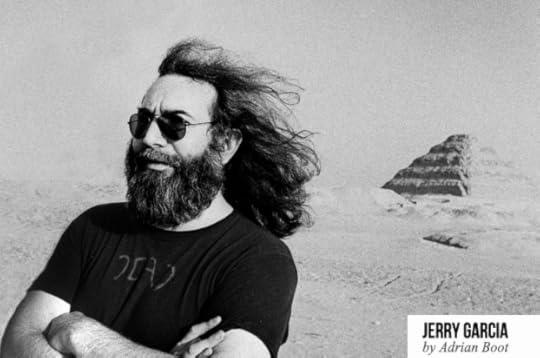
Photo by Adrian Boot/www.urbanimage.tv – Featured in Reckoning
The book begins with a new essay, The Music Never Stopped. The intro to the intro:
This story begins at the moment when it seemed that it was ending: August 9, 1995. Every interview in the pages that follow was conducted after Jerry Garcia died. After it seemed inevitable that the long, strange trip was over. A Grateful Dead without Uncle Jerry was unthinkable – most importantly to the band members themselves.
“We had a meeting where names of people who could step in for Jerry were being discussed, and I just said, ‘No way,’” drummer Bill Kreutzmann says in a 2015 interview that opens this collection. “My feeling was that I didn’t make this decision; Jerry did.”
Bassist Phil Lesh also thought that not only was the band done, but so was his time playing the music of the Dead’s rich, 30-year catalog. “I thought I was done with it and with rock and roll,” Lesh told me in 2002. “I had this idea that I would find closure with the music by composing a 45-minute symphonic canvas utilizing Grateful Dead song themes, melodic hooks, rhythmic grooves and chord sequences.
“Then I went out and played a benefit concert with these Bay Area musicians who had continued to be so influenced and sparked by the music. I was blown away realizing the vitality that remained there and I thought, ‘Maybe there’s not supposed to be closure.’”
Lesh’s search then pivoted 180 degrees to the very opposite of closure: an open-ended exploration of the Grateful Dead’s music that has not let up in the ensuing years. Every surviving member went through a similar process of discovery, of realizing and coming to grips with the impact that their music had and the vitality it retained.
Please click here to download and read the rest.
June 25, 2015
Story behind Joe Cocker covering James Taylor’s “Don’t Let Me Be Lonely Tonight”
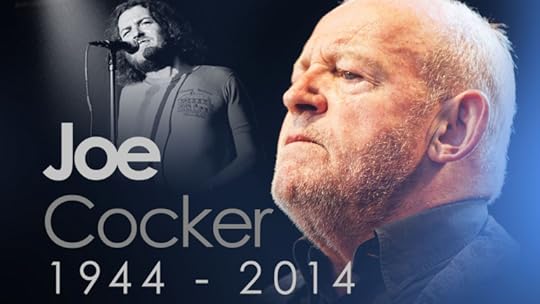 Former Joe Cocker keyboardist CJ Vanston wrote this to Bob Lefsetz:
Former Joe Cocker keyboardist CJ Vanston wrote this to Bob Lefsetz:
I suggested to the label that we cover a James Taylor song…not too “range-ey,” so Joe could be Joe. Chris Briggs at EMI told me “good luck with that, we’ve been trying to get him to do a James Taylor song for twenty years.”
Joe came in that day, and the two of us sat at the piano, with his music stand to my left, him belting away in my ear… At the end I asked Joe “hey what about a James Taylor song, like “Don’t Let me Be Lonely Tonight?”
Joe wore glasses sometimes when he was reading lyrics and I always made fun of them ’cause they’d slip down his nose when he sweat. “Well I don’t know about all that CJ…and besides I don’t know the lyrics.”
So I pulled out the lyrics I had secretly prepared, in the nice 24 point Helvetica that Joe preferred, and said “well now you don’t have any excuses. Let’s try this, it’s just the two of us here.” I got up a nylon guitar sound on my keyboard, had already figured out Joe’s key (I knew his voice like the back of my hand at this point). We started up, he got as far as “do me wrong….do me right….,” and I STOPPED.
“Get the hell out in the vocal booth NOW, MAN!” Joe sounded fucking amazing. Goosebumps were crawling up my spine. I had the mic warmed up and his favorite setting all dialed in on my Universal 6176 with his favorite ‘verb.
I hit record in Logic and did an intro, then counted him in…he always waited for me to count him in…and there he was with the goofy glasses drooping down his nose. “Do me wrong…do me right….tell me lies….but hold me tight…..”
There was magic in the room. We kept playing together, as we had done hundreds and hundreds of times together. Joe was absolutely TESTIFYING. Killing it. As only Joe could. We got to the middle and I decided to throw in an instrumental part. I held up my left hand to him, saying “hang on” while I played a “scratch” solo on the nylon patch. At the end of my “solo,” I mouthed the word “B-R-I-D-G-E!” and counted three-four with my hand.
Joe came in again, we dove back into the song, until the end, when I stopped him again for a little interlude. Then I nodded “go ahead,” and he finished the song off. No click, no band, no engineer, no big studio, no arrangement, just the two of us making music together. I was now completely teared up. I knew something amazing had just happened.
I hit the talkback and said “c’mon in Joe…”
As I waited for him I hit COMMAND “S” to save the magic that had just occurred. When I turned around, there was Joe, with the goofy glasses, covered in sweat. “Well I don’t quite know that one yet CJ….”
Fuck OFF Joe!!! That was MAGIC! I grabbed him and hugged his sweaty body. Then I grabbed him by both shoulders and said “You don’t even know what you just did my man.” We played it back and Joe agreed…we had captured a special take.
The problem was that now I had a track with no click and a keyboard guitar. I decided to figure out the logistics of this later. I overdubbed a bass part, a steel string guitar on the left side, and then an organ part. It sounded like a finished record. Everyone that heard this flipped. Such a brilliant, boiled down, distilled, in the moment performance by both of us. Two buddies making music alone.
Then we tried to go into the big studio and re-create it. I called THE cats to play on it. THE cats. Nobody better. We dicked around for a few hours, and everyone sounded amazing, but it was obvious: we were re-making a record that was already DONE. Joe and I talked in the vocal booth and agreed.
It was a difficult choice to put this “DEMO” on the record for some people, but not for me, and not for Joe. This was a beautiful moment. Just Joe and me doing our thing. Nothing more, nothing less.
The entire process had taken less than an hour; from proposing the song to doing a rough mix (which is what ended up on the record).
I can’t listen to this song now without breaking down inside. I knew we had a special moment together, but little did I know how special.
Here is a link to the song with a cheesy video that I have no connection to. If you don’t get choked up at the end, you’re not human. Joe was a beautiful, humble giant and reluctant genius and I miss him dearly. Thankfully the music will live on.
June 21, 2015
Wild Great Wall hike with my Dad was a memorable one
 Six years after moving back from Beijing, I no longer think about my three and a half formative years in China on a daily basis. Repatriation is a long process and now the whole experience has been processed through my system and simply become a part of who I am. Every once in a while, however, some trigger re-immerses me in expat life.
Six years after moving back from Beijing, I no longer think about my three and a half formative years in China on a daily basis. Repatriation is a long process and now the whole experience has been processed through my system and simply become a part of who I am. Every once in a while, however, some trigger re-immerses me in expat life.
This happened recently when I got onto my old desktop computer to load the hard drive onto a portable disc before some important files and treasured photos were lost to the digital mist. Great memories were stirred as I ripped through pictures of my family’s early days in China, marveling at how small my now-teen children were when we moved to Beijing in 2005: 2, 4 and 7 years old. Then I came across one image that stopped me in my tracks.
It showed my father and me standing on a spectacular stretch of wild Great Wall in Hebei province, about three hours Northwest of our Beijing house. This was in October 2006, early in our second year in Beijing and my parents’ visit was a special occasion. Just six months earlier my father, Dixie Doc, had undergone surgery to remove his cancerous bladder and construct a new one out of his small intestine.
Dixie had been diagnosed just months after we moved to Beijing, casting a pall over what had already been a transformative experience for my family. As most veteran expats know, being so far away from home as he went through his treatment was grueling, and my first visit back was an intense, melancholy affair. Surgery was looming and our best slice of quality time came when I accompanied him to a chemotherapy session. My father lacked his usual vigor and barely seemed able to enjoy time with my high-energy kids. As we hugged goodbye, it was impossible to suppress the thought that it could be for the last time.
A year later, there we were, hiking this gorgeous stretch of land 7,000 miles away, and standing together on this magical piece of history. Staring at the image, I recalled the entire crazy, memorable trip to get there. I had hired a guide who promised me an unforgettable hike, but had foolishly opted to drive myself, instead of hiring a driver, which I could have done for about $50. We slogged through Beijing traffic, then zipped up a large highway, before branching off to go up and over a twisty mountain pass.
At the bottom of the long hill, heading the other way, was one of the region’s infamous miles-long traffic jams. Large blues trucks, most of them loaded down with coal, stretched as far as the eye could see, waiting until they could enter the Beijing city limits at 10 pm. As we passed, I glanced over, fascinated by the army of drivers, some sleeping three abreast in their cabs, other stretching their legs, smoking cigarettes or playing cards with one another.
Squadrons of motorized bikes and tricylces scooted between the trucks, selling water, beer, tea, noodles and cigarettes. We drove by this fascinating scene for miles, contemplating a different route home, before the road became quiet and deserted. Eventually, we turned up a severely rutted dirt road with a sharp drop-off to our right. As I bounced along, struggling with the wheel, Dixie leaned forward and growled, “Where the hell are you taking us?”
This was not the first or last time he asked this question on this and other visits, as I was always intent showing important visitors the country I knew and loved, but this could be dangerous since off-the-beaten-path China could quickly become stuck-in-a-ditch or over-a-cliff China. Pushing those thoughts out of my head, we soon arrived at a small, mostly abandoned village, dying because a well had dried up and there was no water here.
A few dogs and chickens scurried around our feet as we started walking. It was a fairly short hike, probably less than two miles, most of it gently uphill. It was crabapple harvest season and we passed villagers picking and packing the little green and red fruits into wooden crates as well as a couple of donkeys grazing at the end of long tethers. It was windswept and wide-open land, pretty in a gentle, rolling way. Approaching the Wall, the terrain turned steeper and we headed uphill.
The relic itself was spectacular, the best-kept section of wild, unmaintained Great Wall I ever visited. The upper walls were gone, but the base was solid, the bricks perfectly spaced and symmetrical. Tall brittle grasses grew across the top, coming up to our chest in some places. “Wow,” my mother said, simply and accurately.
“Now I see where you were taking us,” my father said, as we stood looking out over the mountains stretching as far as the eye could see. A moment later my mother snapped the picture whose discovery years later triggered all these memories.
I wrote the award-winning The Expat Life column for WSJ.com from 2005-2009. This story is adapted from Big in China: My Unlikely Adventures Raising a Family, Playing the Blues, and Becoming a Star in Beijing (Harper). Copyright 2011 by Alan Paul.
// ]]>Amazon.com Widgets
June 17, 2015
Dean Ween’s Top 5 Records to “Party” With
I can assure you from personal experience that are few better people to party with than Mickey Melchiondo, aka Dean Ween. Some time in a dimly remembered past, I did a Guitar World feature with him, which spotlighted his 5 Favorite CDs to do listen to on drugs. Only we couldn’t say that, so we said “party with.” You never know what I might find on my old hard drive.
I’ve stayed in touch with Mickey all these years and a couple years ago, I went fishing with him on his boat the ArchAngel. I recommend it for anyone. Click here for more info. And click on any of the album titles for more info.
•••••••

Deaner is now a fishing guide, running trips out of Belmar NJ. Check him out at www.mickeysfishing.com
The Butthole Surfers, Locust Abortion Technician (Touch & Go, 1987)
LSD isn’t all about kaleidoscopes; it can also be a dark, frightening experience, and this record is tapped directly into that awful place. It’s a masterpiece of bad vibes and bad drugs, which is probably why it was what I reached for every time I ate mushrooms or dropped acid. It’s also the closest any record ever came to capturing the full awesomeness of The Butthole Surfers, who were the best live band of my generation, and one of Ween’s greatest inspirations.
Parliament, Motor Booty Affair (Casablanca, 1978)
The ultimate record to smoke to, Motor Booty Affair is a concept album of sorts –- something about a drugged-out, freaky underwater orgy. I’ve been told that during the album’s conception, the band often took acid and went deep sea fishing off the Florida Keys, which is about what it sounds like. I have no idea if the story is true, but I would give anything to have been on that boat.
The Jimi Hendrix Experience , Electric Ladyland (MCA, 1968)
As a kid, I looked forward to it raining so I could sit in my room, smoke out, and listen to Electric Ladyland through headphones. The first time I heard “Voodoo Child (Slight Return)” it literally changed my life. Still, I hate to pick a favorite Hendrix record because everything he ever recorded is holy to me. I choose Electric Ladyland simply because it’s a double album so there is more of it.
Dr. Dre, The Chronic (Death Row, 1992)
The title basically says it all — the penetrating synth lines and fat ass beats make this one of the best party albums ever made. I’ve owned at least three copies and it literally never left our van stereo during the Chocolate and Cheese tour. It is one of the best rap records of all time, and Dre is a musical genius, who has been ripped off and watered down by every producer in rap in laughable attempts to gain radio play.
Black Sabbath, Master of Reality (Warner Bros, 1971)
Every great jam I’ve ever been in on eventually comes back to Sabbath, the band that started heavy metal. They should’ve been the first band inducted into the Rock and Roll Hall of Fame. Musical trends come and go but metal just keeps on keeping on, music’s most consistent genre. As long as there are kids smoking pot in the suburbs, metal – and Black Sabbath — will prevail.
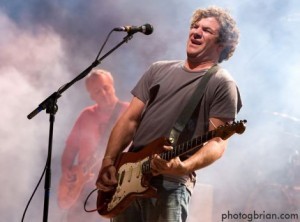
June 13, 2015
Warren Haynes and Railroad Earth tour dates announced
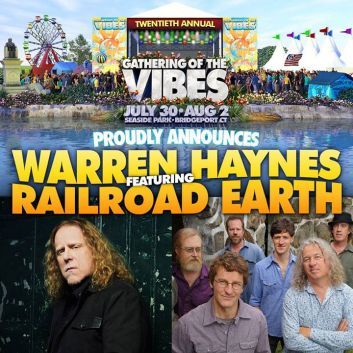
Warren Haynes has announced new tour dates with Railroad Earth. The guitarist, who teamed up with the band for his upcoming albumAshes and Dust, has added a pair of June gigs in Nashville, as well as an appearance at Gathering of the Vibes and another stop in Baldwinsville, NY. One of those Nashville performances will be a two-song set at the iconic Grand Ole Opry, while the Vibes set will be in addition to his previously confirmed Seaside Allstars superjam.
Haynes will release his new album Ashes and Dust on July 24. The album, which finds Haynes backed by Railroad Earth, will feature a number of new songs, as well as material that Haynes penned 20 or 30 years ago. More information on the release can be found here.
Warren Haynes with Railroad Earth Tour Dates
June 27 Nashville, TN—Grand Ole Opry (two songs)
June 28 Nashville, TN—3rd & Lindsley
August 1 Bridgeport, CT—Gathering of the Vibes
August 3 Wilmington, NC—Greenfield Lake Amphitheater
August 4 Charlotte, NC—Fillmore Charlotte
August 6 Cincinnati OH—Riverbend Music Center
August 7 N. Tonawanda, NY—Niagara River Rocks (Free Show)
August 8 Baldwinsville, NY—Paper Mill Island
August 9 Burlington, VT—Lake Champlain Maritime Festival
August 13-16 Scranton, PA—Peach Music Festival
June 10, 2015
Gregg Allman Back to Macon – “I’m No Angel”
A preview of “I’m No Angel” from the upcoming Gregg Allman Live: Back To Macon, GA CD and Blu-Ray release. It’s due August 7, but you can click through to pre-order.
June 1, 2015
Steve Kimock and the endless quest for liquid gold tone
// ]]>Amazon.com Widgets
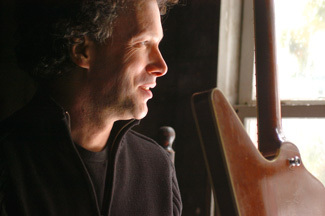
Photo by Glenn Kessler
I just came across this Steve Kimock feature I wrote for Relix in 2005, just before moving to China. I thought it was pretty swell. Enjoy.
*
It’s 8:10 pm at New York’s Bowery Ballroom. Doors were supposed to open ten minutes ago and a few people are sitting on the grimy lower East Side sidewalk waiting to enter, but the Steve Kimock Band is still on stage soundchecking. Hey, these things happen in rock and roll. People oversleep, vans get stuck in traffic, road managers are too hungover to function.
But this is different. Kimock and his quartet have been up there for almost two hours, getting every frequency range of every instrument just right, before working out a couple of new tunes. This is not an aberration; it is what the Steve Kimock Band does most nights. And that is an aberration.
As unusual as it is, Kimock and company’s quest for perfection makes perfect sense once you hear their trance-inducing instrumental rock. Kimock feels the stage has to be set up just right to achieve the balance so crucial to capture his music’s essential every-note-clean-and-precise sound. No doubt his compulsiveness is also fueled by the fact that after 30 years as a professional guitarist, he is finally stepping out on his own. After being a member of Zero and KVHW and a sideman for the likes of The Other Ones, Phil and Friends and Bruce Hornsby, this is finally his chance to fully express his musical vision, which is both unique and ambitious.
“Part of what I’m trying to do is redefine the form of small band improvisation,” says Kimock, restringing his guitar while sitting on a couch in the Bowery’s dressing room. “I want to create some different forms that just the same ol’ organic, ramp up, climax, fall down shape that tends to characterize improvisational rock. I’m looking for more waves, smaller ups and downs.”
Kimock’s small waves provide his music an edge, while also adding a degree of mystery and, at times, frustration. You can innately recognize that you are only hearing a tiny fraction of his musical mind, which makes it compelling. You find yourself leaning forward to see what will come next, on the edge of your seat waiting for the explosion that he often hints at but doesn’t always deliver. The intense climaxes that are most rock guitarists’ stock resolution only occasionally present themselves.
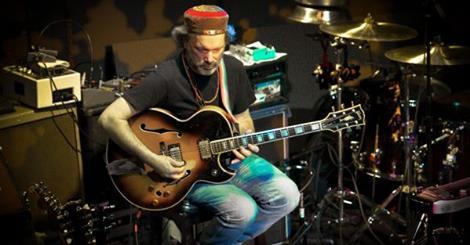 You can see all of this for yourself on the recently released DVD Live at the Gothic Theatre, which captures the band’s New Year’s Eve performance. The band also self-released the two-CD set Live in Colorado, Vol 2, featuring music recorded the prior night (December 30, 2003). All of this as well as more live recordings is available at kimock.com.
You can see all of this for yourself on the recently released DVD Live at the Gothic Theatre, which captures the band’s New Year’s Eve performance. The band also self-released the two-CD set Live in Colorado, Vol 2, featuring music recorded the prior night (December 30, 2003). All of this as well as more live recordings is available at kimock.com.
More importantly, the Steve Kimock Band also recently recorded a new studio album, with Alphonso Johnson playing bass. Everyone involved is extremely excited about the results, which should be available some time this fall, either self-released or through one of the several labels with whom Kimock’s wife and manager Jen is currently speaking.
“I am very, very excited about this recording,” says Kimock. “ I’ve been trying to get a proper studio album together for such a long time and I finally see a light at the end of the tunnel. I absolutely have never gone into a studio and adequately captured what it is I do. But I think I’ve figured it out. I really do think I’ve gotten it largely the way it’s supposed to be.”
Until that comes out, Kimock will continue to win fans over one at a time. Getting them to check him out is the hard part. Winning them over once they experience the music is much easier. Dead guitarist Jimmy Herring still remembers the first time he heard Kimock when they played a show together years ago, when Herring was in the Aquarium Rescue Unit and Kimock was playing with Merle Saunders.
“Steve knocked me off my feet with his touch, the incredible subtlety of his playing and the most angelic tone I have ever heard in my life,” says Herring. “I was blown away and thought, ‘Who is this guy?’”
Years later, their paths crossed again when herring’s Jazz Is Dead played with Kimock’s KVHW. “I was stunned all over again,” recalls Herring. “I walked into [San Francisco’s] Maritime Hall and Steve was playing alone, with the natural ambiance of the room and it sounded like angels had come down from heaven and were on stage playing music. It was an unbelievable sound that has remained in my head.”
The other thing that lodged in Herring’s mind was Kimock’s genuine sweetness and lack of pretense. “I complemented him on his tone and a minute later, he lent me a $10,00 Dumble amp,” says Herring, in awe. ”People just don’t do that.”
Kimock always plays through a 50-watt Dumble, a rare and magnificent beast that is at the heart of his sound. Unlike almost any other band, Kimock and co. do not use stage monitors, the speakers through which musicians generally hear themselves. Instead, they are listening and reacting to only the amps and the house (audience) sound.
“The coolest thing about Steve is what’s going on in his head and how he hears not only his parts but everything around him,” says soundman Evan Crown. “Because he doesn’t use monitors, he’s vibing off the house and the balance he hears in his head is unbelievable. If it’s a millimeter off, he hears it. He’s in a bubble completely in tune with the music.”
Kimock plays a wide assortment of fairly eccentric guitars – even his Strat is heavily modified, with unusual pickups. He only occasionally uses a small number of vintage effects and keeps them unplugged and out of his chain when not in use, a departure from a more standard pedal board, which the signal always passes through. Nothing comes between him and his Dumble. Kimock carves out his music, letting fly little clusters of notes that are so clean and crystalline that it seems you could reach out and touch them. His playing is often sparse and sometimes spacey and comes from deep within, too instinctual to be called cerebral.
Because Kimock leaves so much white space around his notes, he needs a band that is ready to respond and fill in some gaps. Drummer Rodney Holmes is a perfect foil, a remarkably explosive, highly creative musician, whose soulful pulse keeps the music moving forward no matter how horizontal Kimock’s playing gets. The two feed off each other, tossing ideas and phrases back and forth, clearly grooving off of each other’s creative sparks. Though there is often full group interaction, at other times guitarist Mitch Stein, keyboardist Jim Kost and relatively new bassist Leo Traversa only add coloring, melodic contour and harmonic structure to Holmes and Kimock’s dynamic improvisations.
Holmes joined Kimock about four years ago, fresh off a three-year stint in Santana, which included playing several tracks on the multi-platinum Supernatural, including the hit single “smooth.” Prior to that, the Bronx native played primarily in jazz bands with the likes of Joe Zawinul and the mighty Wayne Shorter. He had no exposure to the jam band world before hooking up with Kimock.
“It was all new to me and the first thing we did was two nights at Wetlands, the heart of the whole scene,” says Holmes. “It was sort of a cultural shock. I saw all the mics and ran over to tell Steve that there people recording, because I came from a world where that was a no-no. He was like, ‘That’s ok. We do that.’ The people were really different but really sweet and accepting and I have enjoyed playing for them.“
Holmes is a fantastic player – one of the very best I’ve seen in many years of listening to music. He and Kimock are different in many ways but they share a monastic devotion to music and an ability to be completely present in the moment, totally immersed in their playing. Frank Goodman, the co-leader of The Goodman Brothers, Kimock’s first real professional band and the group with whom he moved from Bethlehem, PA to San Francisco in the early 70s, remembers meeting the guitarist, who was all of 18 and living alone in a basement apartment.
“He was like a guitar monk,” says Goodman, still a good friend and today the editor of puremusic.com. “He just sat down there in the basement playing guitar all day and people came by and slipped food under the door. We heard him once and invited him out to our farm to jam and he basically never left.”
The Goodman Brothers and a veritable commune of people moved out to the Bay Area and soon established themselves, playing around frequently. They also befriended the folks at Mesa/Boogie, at the time a tiny boutique amp maker. Goodman started making footswitches, while Kimock, always a gear junkie and tech nut, became the company’s customer answer man. He worked off and on at Mesa for years and jokes that his time card was only recently tossed out.
Today Kimock is an engaged father of three, living with Jen, their baby son Skyler and, half the year, his teenaged son John in a farmhouse back in small town Pennsylvania. But he spent years living virtually homeless and underground in the Bay Area.
“I love having a house with a pond and big trees, beautiful children and a lovely wife,” he says. “It’s fabulous, but I was pretty happy living in a tree, too. You go through changes. I seriously floated for a long time. I didn’t have a driver’s license for almost 10 years. I walked everywhere and lived in the woods, completely disconnected from society.
“It used to considered a noble thing to just be wandering, a hobo riding the rails with your few possessions tied up in a kerchief on a stick. That part of who we are as people disappeared, but we need some more intelligent wanderers, people who are happy to be searching, looking around and taking advantage of life and the beauty and wonder of being alive and out in the world without being tied to all our capitalist consumer culture.”
During his period living underground, Kimock also separated himself from the more mainstream guitar culture and began forging his own style. He had been a blazing player, his style an amalgamation of John McLaughlin and Johnny Winter. Then he decided that all he had achieved – and it was a lot, according to anyone who saw him hypnotize listeners with the Goodman Brothers—was “being clever with my hands.”
“It was just clouds of notes,” he says. “I played all kinds of really fast, really fancy stuff all the time. I was attracted to achieving a virtuoso level of proficiency and I took it pretty far. Then I found a book in a 50-cent bin called Zen Mind, Beginner’s Mind and I took it to heart. Whenever it said ‘life’ I substituted ‘guitar’ and changed my whole approach.
“I took my guitar to a music store, put the action up as high as you can go, put the heaviest strings possible on and said, ‘Okay, I’ve e built my playing around having all this facility and now I am going to see what I can do with absolutely no facility,’ because it was impossible to play fast. I just threw out my first 10 years of life on the guitar.”
Kimock gigged around with many people before ending up in Zero, with whom he played for over a decade, developing a very large West Coast audience. During this run, Jerry Garcia named him as his “favorite unknown guitarist” and people started mentioning the two in the same breath more and more often. It had a lot to do with the similarity in their clean tone and also the fact that Kimock popped up in bands with Bob Weir, Keith Godchaux and Merle Saunders, amongst other Dead members or friends.
“There’s really no valid comparison between us,” says Kimock. “He was a great singer and songwriter, a charismatic man with a personality huge enough to be able to herd cats, keeping that whole crazy organization together for so many years. He was huge in areas I am deficient. I would never bother to compare his accomplishments with mine because of a similarity to our guitar tone.”
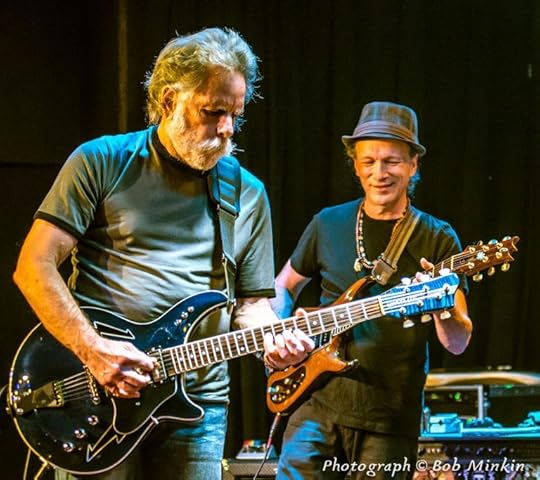
Photo by Bob Minkin
Still, when the Dead’s surviving members reunited for the first time in 98 as the Other Ones, Kimock and Mark Karan were the featured guitarists. That gig led to Kimock being a charter member of Phil Lesh’s Phil and Friends, with the two of them and drummer John Molo joined by an ever-rotating cast.
“That gig was so much fun and I learned so much playing with all the different guys,” says the guitarist. “I loved every minute of rehearsal and everything else. We started out with a bang, playing two Warfield shows with Trey and Page from Phish and it was a riot. I was such an idiot that I had only the thinnest grasp on Grateful Dead material before the Other Ones gig and I was totally clueless about the Phish thing. They were just two guys showing up to play to me, but Trey was tremendous and a lot of fun.”
Kimock was the one regular member in Phil Lesh’s rotating cast of Friends, starting with their first shows in April ’99, before leaving abruptly after one show of a joint tour with Bob Dylan in the Fall of ’99 tour. His departure has been a source of much curiosity in the Deadhead community, but he’s not eager to discuss it at length.
“Some shit went down where people got treated a certain way and I was like, ‘I love you guys but I can’t be party to this,’” he recalls calmly. “They’re a great band, with great musicians and I’m glad they’re doing well. Now I have my own cross to bear with my own music and that’s where all my energies are focused.”
So here he is. Kimock is pushing 50 but looking obscenely young, his face unlined, his body lean. His biggest fans think he should be well past the great cult player status and out of playing clubs like the Bowery, but he is remarkably non-bitter.
“I’m trying to do something that’s very specific to my own esthetic and I wouldn’t be surprised if it wasn’t of interest to a great many people,” he says. “At the same time, I’m sure the people who relate it probably think it’s cooler than snakes.”
Kimock finishes restringing his white Strat, plays a couple of sliding jazzy chords and looks back up across the guitar’s neck.
“I don’t begrudge anyone their success and I certainly don’t hold anyone responsible for any relative success or lack thereof I’ve had. I’m not mad at anyone. Right now, I’m just excited to finish this recording, get it out there and see what happens.”
// ]]>Amazon.com Widgets

